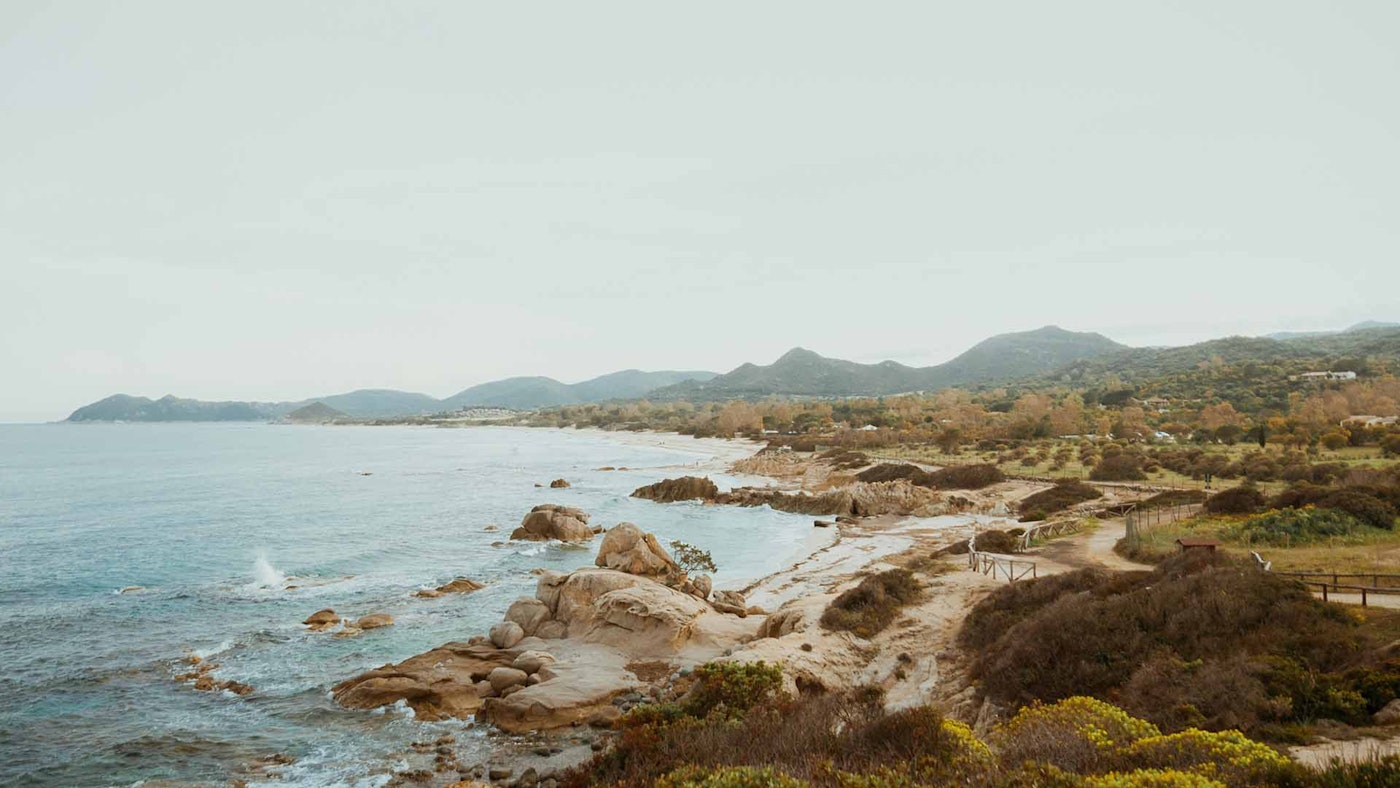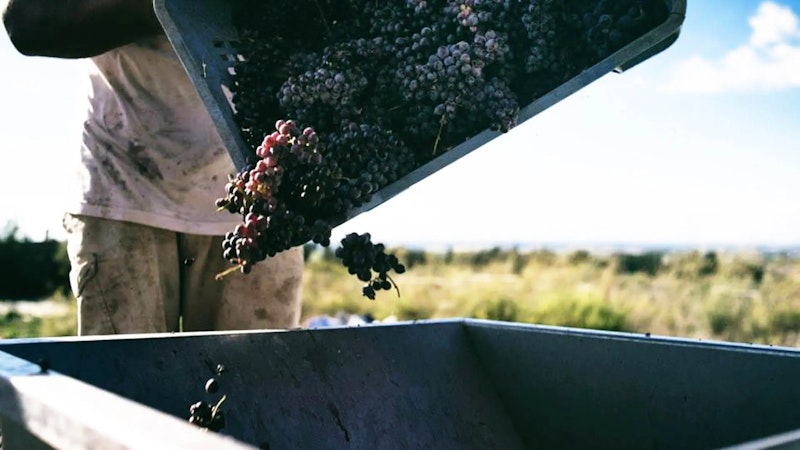Cannonau and Vermentino: the iconic wines of Sardinia

Say Cannonau and Vermentino and you immediately know where you are. The first, Cannonau, is so widespread on the island that it is called the "wine of the Sardinians" and is the oldest nectar of Bacchus in the Mediterranean. The second, Vermentino, is a semi-aromatic white wine of mysterious origins, which has found its greatest expression in Gallura: here it obtained the denomination of controlled and guaranteed origin in 1996, but there is also the DOC Vermentino di Sardegna.
AN ANCIENT RED, A MYSTERIOUS WHITE
Until recently, the roots of Cannonau were thought to be in Spain, but recent discoveries have not only disproved this long-held hypothesis, but have even turned the history of viticulture on its head. The turning point came in 2002, when cables were laid in Borore at the archaeological site of Duos Nuraghes, where hundreds of very ancient grape seeds (the seeds contained in a grape berry) were found, charred by time and dating back to around 1200 BC. This discovery, which has put the Duos Nuraghes site on the national map, has not only proved that the Nuragic peoples cultivated vines and produced wine, but has also made it possible to understand that the 'Sardinian Cannonau', previously thought to have been imported from Spain, is a different variety from the Iberian one and could have originated in Sardinia and then been exported to Spain. The official historical theory, until the recent discoveries of Sardinian grape seeds, was that the domestication of the grapevine, which originated in the Caucasus and Mesopotamia, was gradually transferred to Anatolia and Egypt, from there to the Aegean islands, Greece and the rest of Europe, and finally, thanks to the Phoenicians, arrived in the western Mediterranean and Sardinia. But the grape seeds of Dous Nuraghes changed everything and today it can be said with certainty that the cultivation and domestication of Vitis vinifera was already known in Sardinia when the Phoenicians arrived.
The origin of Vermentino is still unclear: the most accepted hypothesis is that it is of Spanish origin. It is thought that it was introduced to Corsica in the 14th century and from there it reached Liguria in the following centuries. Records show that in the 19th century its cultivation was particularly widespread in the extreme west of Liguria (Ventimiglia, San Remo) and in the extreme east (Sarzana). From here, Vermentino spread to Tuscany, although it is perhaps in Sardinia that it has found its best habitat.
Not even the name offers many clues as to the origin of the vine. It is thought to derive from vermena, a now obsolete Italian word meaning 'young, thin, flexible branch', which in turn comes from the Latin verbena (used for 'herbs and branches of evergreen plants').
TYPOLOGY
Cannonau grapes are mainly used to produce Cannonau di Sardegna wine, DOC since 1972, red or rosé. There is also a liqueur type of Cannonau, obtained by adding grape alcohol to must or natural wine, which gives dry liqueur type Cannonau di Sardegna (with an unfilled alcohol content of 18% and residual sugars not exceeding 10 g/l) and natural sweet liqueur type Cannonau di Sardegna, with an unfilled alcohol content of 16%, residual sugars of 50 g/l and ageing in oak or chestnut barrels for two years.
Vermetino is a semi-aromatic grape variety used to produce a wide range of wines. In Sardinia, the best known and most appreciated Vermentino wines are the Vermentino di Gallura DOCG, Denominazione di Origine Controllata e Garantita wines, characterised by considerable structure and alcohol content. The Vermentino D.O.C.A. wines include the sparkling Vermentino di Alghero and the Vermentino di Sardegna, which are characterised by a greater variety of characteristics, from the more structured to the fresher wine used as an aperitif.
TWO ROADS TO SIP
The Cannonau Wine Route is a non-profit association founded on 15 January 2009 by 21 local entities with the aim of promoting and developing tourism in the wine-producing rural areas of the provinces of Nuoro and Ogliastra, recognised by the Region of Sardinia. The route proposes a thematic itinerary that encompasses the geographical areas of Nuoro, Mandrolisai and Ogliastra, where enchanting landscapes of great naturalistic value, from the mountains to the sea, alternate with agricultural landscapes shaped by human activity, in a context rich in testimonies of a millenary history, nuragic sites, tombs of the giants and domus de Janas. In addition to the Strada, the Consorzio Tutela Cannonau di Sardegna was also officially recognised at the end of October 2017.
Then there is the Strada del Vermentino di Gallura Docg, created to promote the entire Gallura area, with its important food and wine production, renewing and integrating the food and wine offer with its historical and scenic beauty and, last but not least, its famous hospitality.
WHAT IT IS
Sardinian Vermentino is not to be confused with Ligurian or Tuscan Vermentino. Vermentino di Gallura is characterised by its remarkable structure and alcohol content, peculiarities due mainly to the terroir of the area in the north-east of the island: a warm climate with low humidity and rather rich soil. Wines made from Vermentino are generally fine and well-balanced, with intense aromas of ripe, white-fleshed fruit and flowers, accompanied by notes of aromatic herbs reminiscent of the Mediterranean undergrowth. On the palate, the Vermentino is soft, with good suppleness and not too much acidity, with a characteristic almond finish. Thanks to its structure and freshness, Vermentino can accompany even the most elaborate fish dishes. Vermentino di Gallura or Vermentino di Sardegna is particularly interesting with fish soups and shellfish dishes such as lobster Catalan style or lobster in sauce. It is interesting with porceddu, but also with a range of malga cheeses.
On the other hand, Cannonau's great ability to adapt to the environment, and therefore its distribution in ecologically diverse areas, means that it can produce wines with very different characteristics. It is therefore difficult to generalise. Rosé Cannonau is a wine with a bright pink colour, a floral bouquet of roses and violets, a fruity flavour of cherries and small fruits, and a dry, savoury taste. The red Cannonau is ruby red in colour, with a ripe, fruity perfume of red and black berries (cherry, myrtle, plum, blackberry) with a spicy background of pepper and vegetal notes of aromatic and officinal herbs and Mediterranean undergrowth. Cannonau Riserva is ruby red in colour, tending towards garnet with age, and has a floral bouquet of rose or dried rose petals, jam and prunes, with a spicy background of cloves and cinnamon, as well as balsamic notes. The taste is characteristic, savoury, very warm and smooth. Finally, the Cannonau passito has a predominant aroma of ripe fruit and is spicy, round and silky on the palate, while the Cannonau liquoroso is a ruby red wine with an unmistakable aroma.
What wines should be on the menu? In a restaurant, it is essential to have at least one reference per variety. It depends very much on the cuisine you offer, your tastes and the clientele you have.






